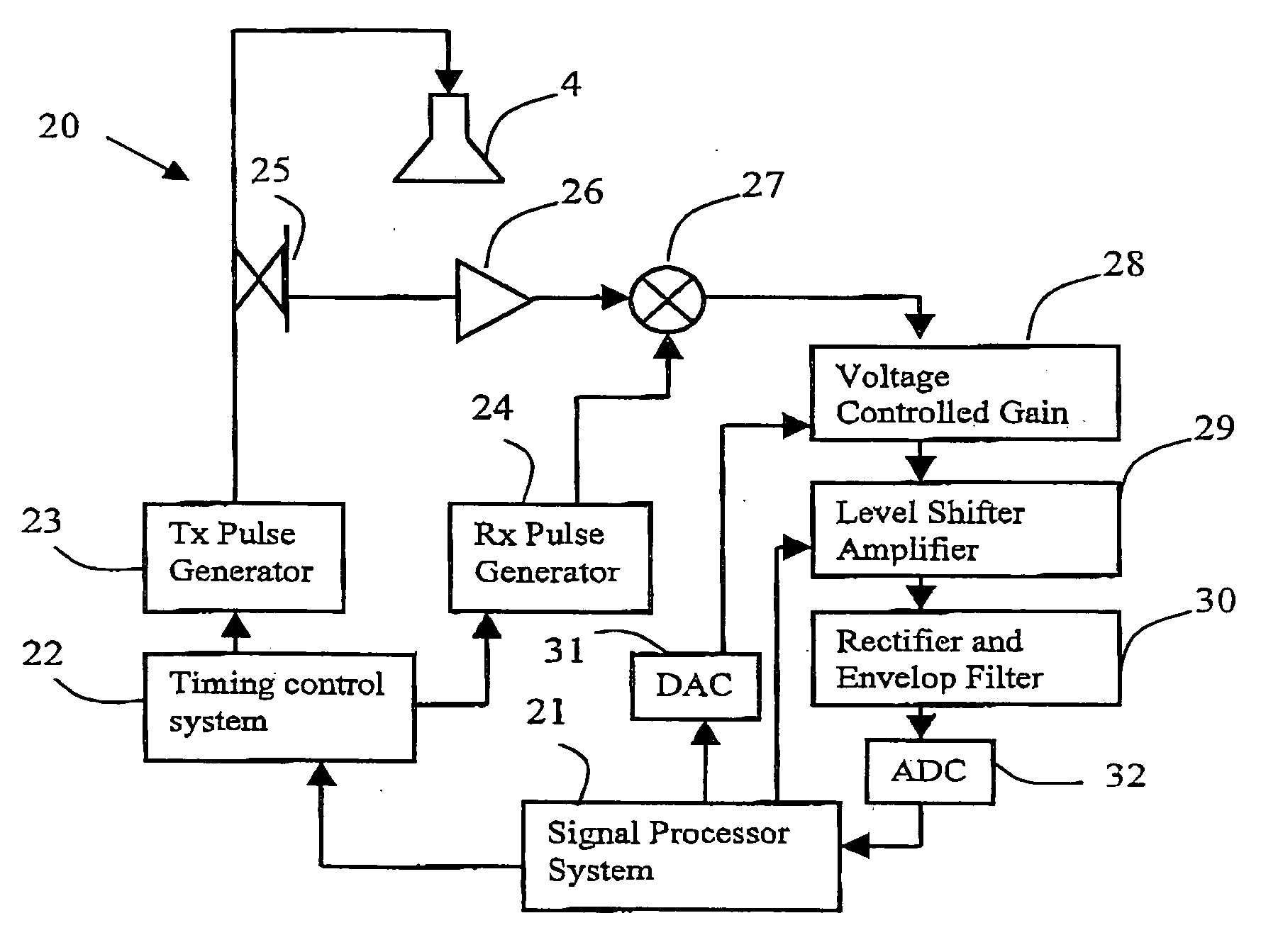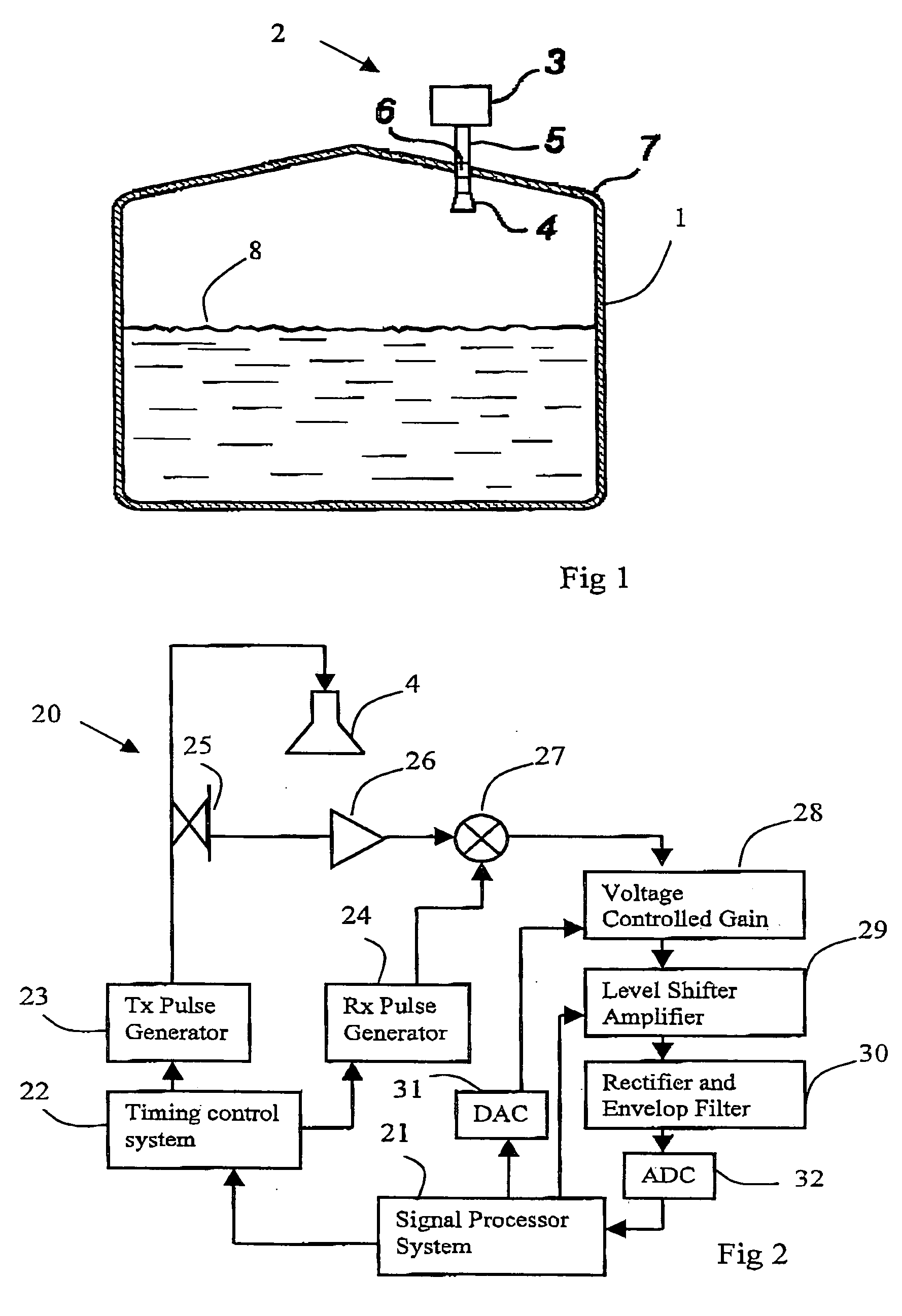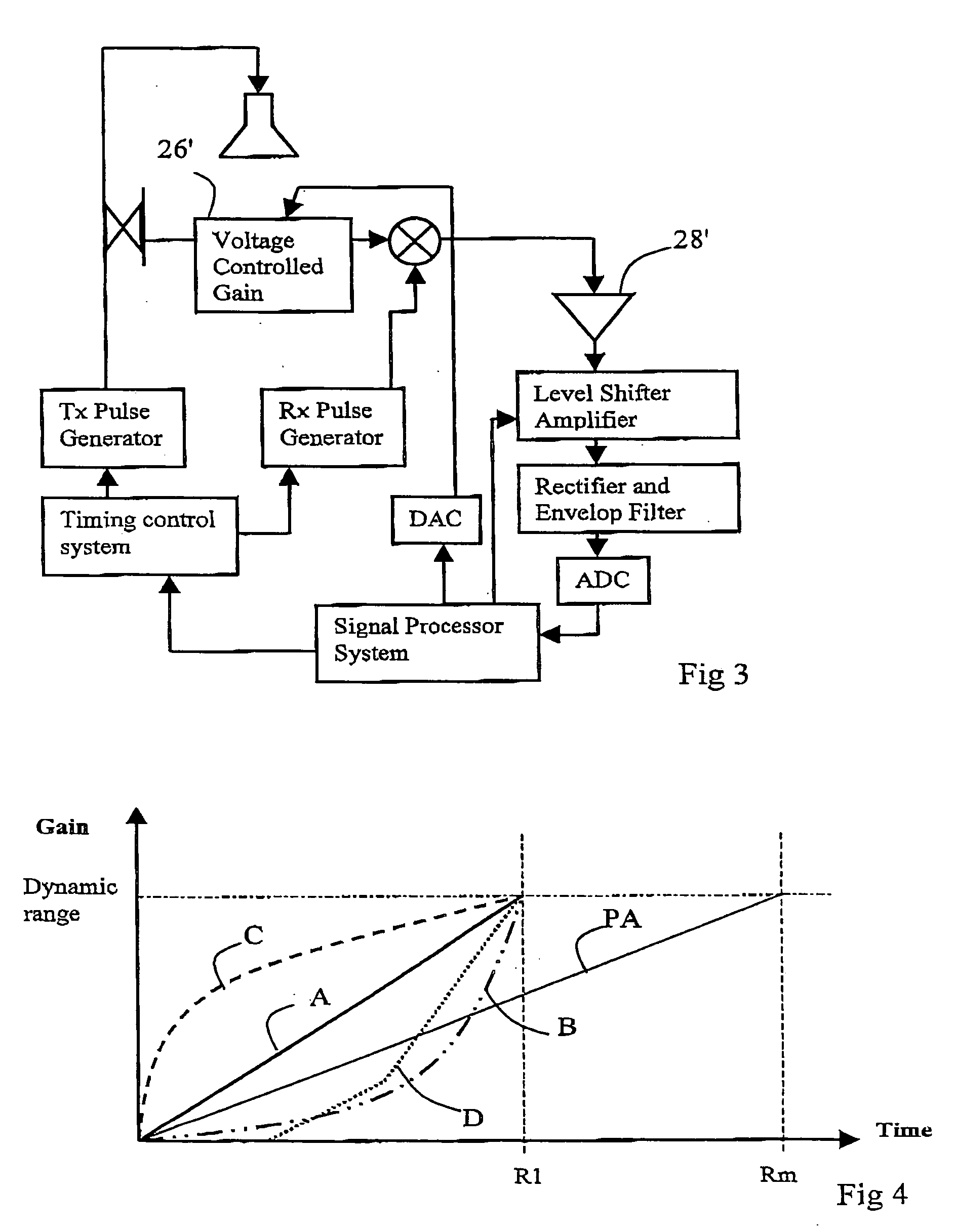[0011] With this radar level gauge system, an automatic sensitivity control is provided. Thus, the per se known functionality of amplifying the received echo signals could now be used in a much more efficient and reliable manner, since the amplification is optimized for the actual working conditions at hand, and for the actual tank in which the system is installed. The amplification could then in a more optimized way than is heretofore known, be used, e.g. by
voltage control, to provide higher amplification for echoes from larger distances, Thereby, the sensitivity of the system, and consequently also the accuracy of the measurements, is maximized by adjusting the
gain based on configured tank height. The amplification increase could be fixed or be controlled based on the strength of the echoes present. Theoretically, an increase of up to 12 dB is obtainable, which would render a four times as long measuring distance possible, or a doubling of the measuring distance with half as large an antenna. This has also been confirmed in practice.
[0012] By using the present invention, echoes from a
far distance have the same possibility to be recognized as nearby echoes, i.e. the amplification provides the same echo
signal strength regardless of the distance, and the response could be optimized for the tank height where the system is actually used. Hereby, the dynamic range of the amplification means is more effectively used, compared to known systems where the amplification is normally dimensioned for a maximal measuring distance, e.g. 30 meters, which provides a non-optimal use of the dynamic range of the
amplifier when used in tanks of other heights. Since the dynamic range of the amplification means is normally limited, it is of great importance to make as effective use of said range as possible over the measuring distance in
actual use. The present invention is particularly advantageous for large measuring distances.
[0017] Preferably, the processing circuitry is arranged to amplify the echo signal before any other significant processing or manipulation of the signal. Thus, the
amplifier is situated relatively close to the
microwave modulation (NW) module. Hereby, the
noise level could be significantly reduced.
[0018] The amplification scheme of the processing circuitry is preferably adjustable to optimize the amplification of the echo signal based on the height of the tank by means of
software control, based on an input tank height value. The
software could e.g. be an embedded
control software, executed on an conventional signal processor as is per se known in the art By using such
software control, the adjustability for different tank heights etc becomes relatively simple and cost effective, making the process of installing the radar level gauge system, and adapting the system for the working conditions at hand, relatively simple.
[0022] Further, the processing circuitry is preferably adapted to estimate information on the tank height automatically, based on at least one previously determined filling level. Hereby, the system adapts itself automatically to new conditions, whereby the installation process becomes easier and less costly. For example, a first filling
level measurement could be based on a standard value, and thereafter, better estimates of the filling level could be acquired during use, based on subsequent filling level determinations. The tank height could normally be estimated to be the lowest estimated filling level, but possibly with some adjustments related to the number of filling level determinations that have been made since installation of the system or the latest reset of the system, etc.
 Login to View More
Login to View More  Login to View More
Login to View More 


